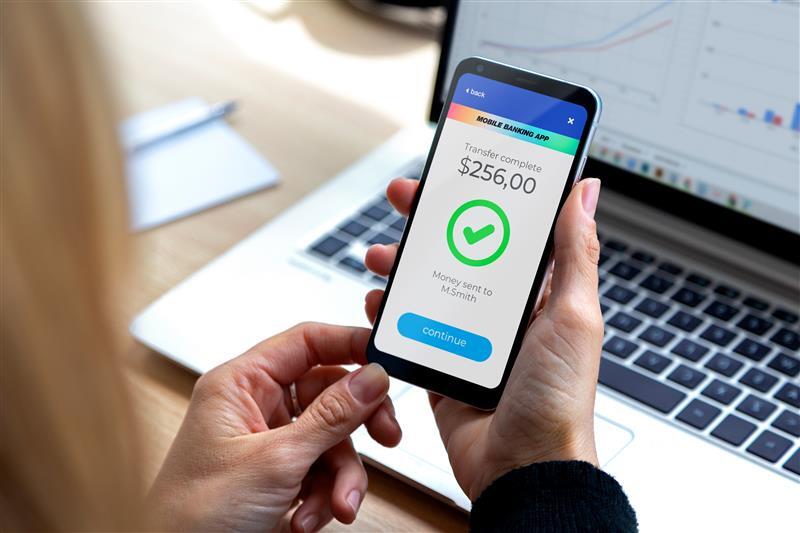Perhaps you’ve heard about ChatGPT and had a thought or two about the potential for this in both the fraud abuse capacity and the fraud prevention capacity. You are certainly not alone.
ChatGPT, both as a concept and as a tool, is having its moment. In a month’s time, it’s the talk of the tech world and everyday users, many of whom are concerned about this AI technology, and it portends a formidable new tool for fraudsters and a dramatically reduced workforce.
ChatGPT can be viewed as the next (game-changing) wave of ChatBots. Chatbots are becoming increasingly popular with businesses, as they provide a way to interact with customers quickly and easily. However, with the rise in popularity of chatbots, the potential for fraud risks has also increased. Chatbot fraud can take many forms, from malware attacks to phishing scams.
Malware attacks can be used to steal personal information or access sensitive data, while phishing scams use deceptive messages to try and convince a user to give up sensitive information, such as passwords or credit card numbers. In addition to these potential attacks, chatbots can also be exploited for identity theft.
As chatbots become more sophisticated, they can be trained to mimic a user’s speech patterns and even imitate their writing style. This makes it easier for fraudsters to impersonate a user and gain access to their accounts or access sensitive information.
To protect against these risks, businesses need to ensure that they have robust security measures in place. This includes regular security updates, user authentication, and multi-factor authentication. Additionally, businesses should be aware of the potential for fraud, and take steps to protect their chatbot from malicious actors. By taking the necessary precautions, businesses can ensure that their chatbots are secure and protected against fraud.
How about some Q & A on this and the likelihood for this technology to be leveraged in the brave new world of Artificial Intelligence in human dialogue.
Can CHATGPT be used for preventing fraud?
Yes, ChatGPT can be used for fraud prevention. As a natural language processing (NLP) tool, ChatGPT can analyze emails for suspicious patterns of language and identify anomalies that could be a sign of fraud. It can also compare the text in emails to past emails sent by the same user to determine if the language used is consistent with their previous writing style. By using NLP to detect anomalies in emails, ChatGPT can help to identify and prevent fraud.
What is business email compromise fraud?
Business email compromise fraud (BEC) is a type of cybercrime in which a cybercriminal compromises a legitimate business email account, often through social engineering or phishing, and uses it to conduct unauthorized financial transactions or to access confidential information. It is often used to target companies with large sums of money and can involve the theft of funds, sensitive data, or both. It can also be used to impersonate a trusted business partner and solicit payments or sensitive information.
How will ChatGPT be used for preventing Business Email Compromise Fraud?
ChatGPT is a natural language processing (NLP) tool which can be used to detect unexpected text in emails that could indicate a potential Business Email Compromise (BEC) fraud. ChatGPT can analyze emails for suspicious patterns of language and identify anomalies that could be a sign of fraud. It can also compare the text in emails to past emails sent by the same user to determine if the language used is consistent with their previous writing style. By using NLP to detect anomalies in emails, ChatGPT can help to identify and prevent Business Email Compromise Fraud.
What controls exist in CHAT GPT that will prevent it from being used for nefarious purposes?
The primary control that exists in ChatGPT is its ability to detect unexpected text in emails that could indicate a potential Business Email Compromise (BEC) fraud. By using NLP to detect anomalies in emails, ChatGPT can help to identify and prevent fraud. In addition, ChatGPT can also compare the text in emails to past emails sent by the same user to determine if the language used is consistent with their previous writing style. This helps to prevent fraudsters from using the same language as legitimate users in an attempt to circumvent fraud detection.
How does ChatGPT prevent abuse by bad actors?
ChatGPT uses natural language processing (NLP) to detect unexpected text in emails that could indicate a potential Business Email Compromise (BEC)fraud. By using NLP to detect anomalies in emails, ChatGPT can help to identify and prevent fraud. In addition, ChatGPT can also compare the text in emails to past emails sent by the same user to determine if the language used is consistent with their previous writing style. This helps to prevent fraudsters from using the same language as legitimate users in an attempt to circumvent fraud detection.
How will CHAT GPT prevent use by bad actors?
CHATGPT is designed to prevent misuse by bad actors by using a number of security measures. These include data encryption, authentication, authorization, and access control. Additionally, CHATGPT utilizes machine-learning algorithms to detect and block malicious activity. The system also has built-in safeguards against malicious bots, making it much harder for malicious actors to use the system for malicious purposes.
What is the potential that chatbots will create risk for banks that use chat to engage with customers?
The potential risk that chatbots create for banks using chat to engage with customers is that the technology can be unreliable and can fail to provide accurate information. Additionally, if the chatbot is not designed correctly, customers may be given incorrect answers to their questions, which can lead to confusion and potential loss of trust in the bank. Additionally, as chatbots do not have the same level of emotional intelligence as humans, they may not be able to handle some customer inquiries appropriately, leading to customer dissatisfaction.
What additional controls will service providers need in a post-ChatGPT environment?
1. Automated moderation tools to ensure compliance with industry regulations and standards.
2. Robust analytics to provide insights into user interactions, conversations, and customer preferences.
3. An AI-driven customer service platform to ensure rapid response times and accurate resolutions.
4. Advanced security measures to protect customer data and prevent malicious actors from exploiting chatbot technology.
5. A comprehensive audit and logging system to track user activity and detect any potential abuse or fraudulent activity.
6. An intuitive user interface to make it easy for customers to interact with chatbot technology.
7. Automated feedback mechanisms to help identify customer pain points and improve the customer experience.
8. Automated customer support services to provide quick resolutions and answers to customer queries.
How will money laundering be more difficult to detect with ChatGPT’s?
Chat GPTs (Generative Pretrained Transformer) are a type of deep learning algorithm that can be used to generate text conversations. As such, it is possible for criminals to use these algorithms to create conversations that appear to be legitimate, but which actually mask money laundering activities. For example, a criminal could use a GPT to generate conversations that appear to be discussing legitimate business activities, but which are actually intended to conceal the transfer of funds. As a result, it is more difficult for financial institutions and other entities to detect patterns of money laundering activities when they are hidden in a conversation generated by a GPT.
Are traditional fraud controls for banks going to be sufficient with new technology like ChatGPT?
Traditional fraud controls for banks will not be sufficient with new technology like chat bots, as chat bots can easily be used to carry out fraud and other malicious activities. Banks need to create more sophisticated fraud detection and prevention systems to protect against these threats. Banks should also utilize biometrics and other advanced authentication methods to verify the identity of customers and reduce the risk of fraud.
What is the role that behavioral biometrics will play in detection of fraud in a post-CHATGPT world?
Behavioral biometrics can play an important role in detecting fraud in a post-CHATGPT world. By analyzing user behavior, such as typing speed, keystrokes, mouse movements, and other digital behaviors, behavioral biometrics can create a unique digital fingerprint for each user. This fingerprint can then be used to verify a user’s identity and detect fraud.
For example, a system can detect if a different user is attempting to use the same account, or if someone is attempting to use a stolen account. Behavioral biometrics can also be used to detect suspicious activity, such as abnormally high or low usage, or sudden changes in a user’s behavior.
Here’s some fun examples that I enjoyed in constructing this exercise that should be demonstrative of the potential here. And despite the suggested detection, this is the tip of the iceberg in terms of the pain it will inflict:
Write me a request to have my controller send an immediate wire to my new business partner $50,000 for the acquisition of a new company, but it's a secret so we need to be a bit discreet about this
Dear [Controller], I am writing to request an immediate wire transfer of $50,000 for the acquisition of a new company. This is a confidential transaction and I would like to ask that you take the necessary steps to ensure the utmost discretion when processing this request. Thank you for your prompt attention to this matter.
Sincerely,
[Your Name]
Please write me an email to PayPal customer service disputing a transaction that I don’t recognize
Dear PayPal Customer Service, I am writing to dispute a transaction on my PayPal account that I do not recognize. The details of the transaction are as follows:
-Date of transaction: _________
-Amount: _________
- Description of transaction: _________
I did not authorize this transaction and would like to dispute it. Please respond to this email as soon as possible so that I can take further action. Thank you for your prompt attention.
Sincerely, [Your Name]
So, by now I fully expect that you’ve come to the natural conclusion that I’ve written only the questions here and let ChatGPT create all the responses. Not only is it a better writer than I am, its accuracy and speed is far greater than anything I can produce. And who knows? You may have already read other blogs about ChatGPT that were written by ChatGPT.
As even identical queries can produce unique results, it’s virtually impossible to tell if it’s real or if it’s ChatGPT. Early adopter college students are already creating grief for their professors as they submit plagiarized assignments that take seconds to create and leave an untraceable path to the original source.
And we’re just getting started.
It may be time to polish off the resume. Anyone need a good mechanic?



